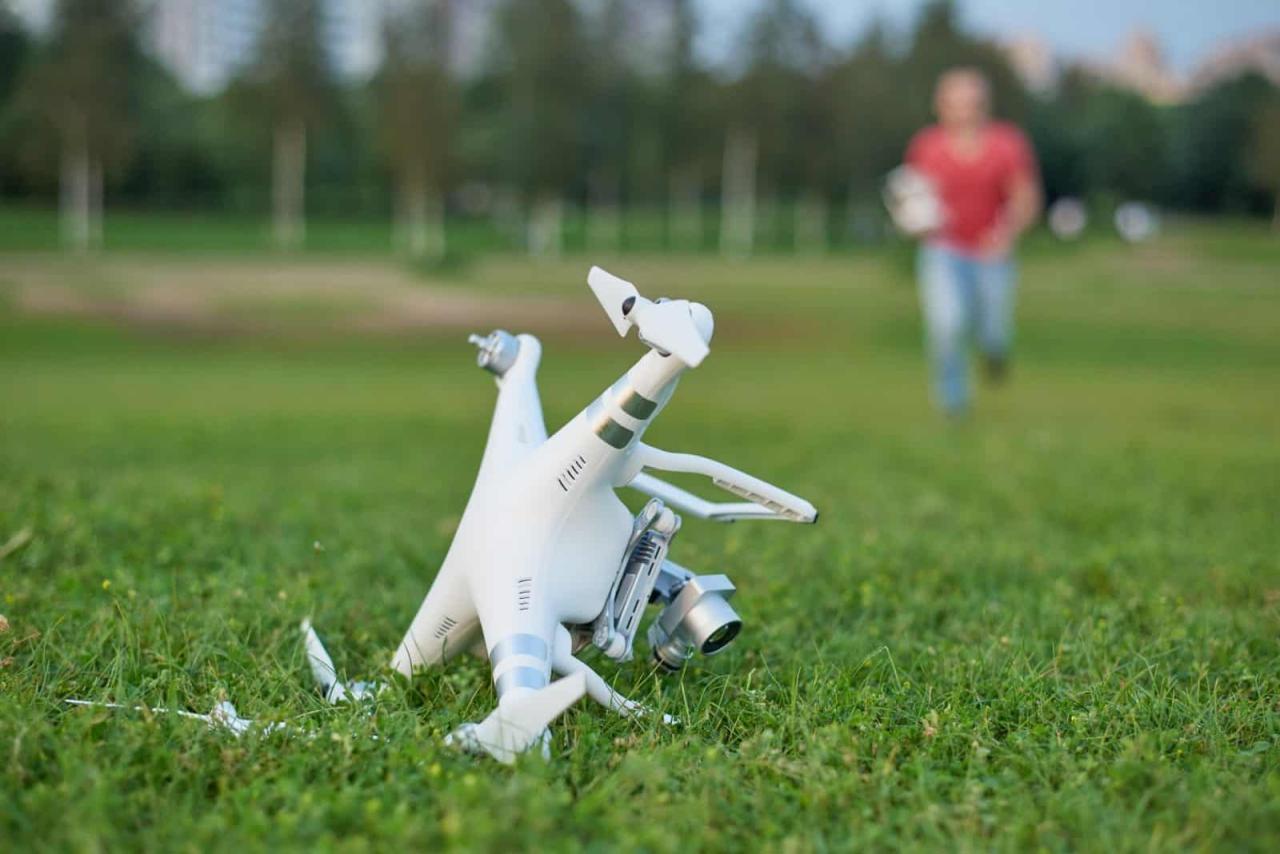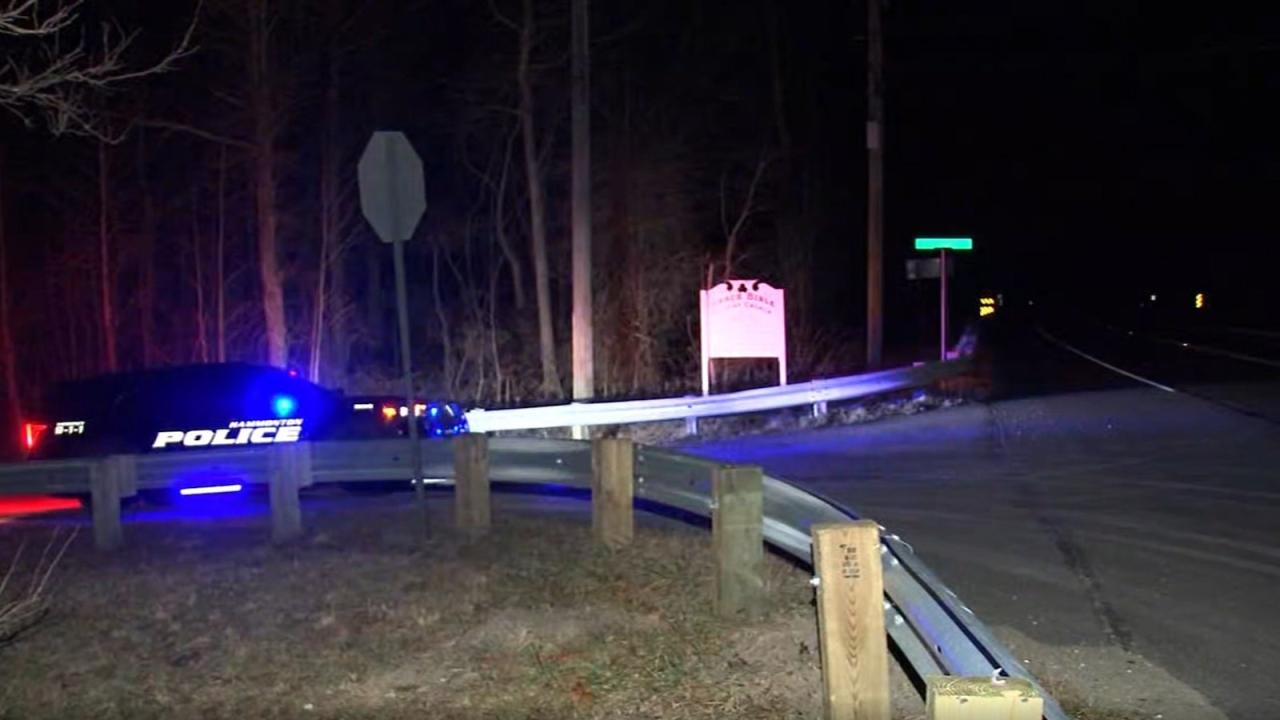Drone crashes in New Jersey are increasingly becoming a concern, highlighting the need for a comprehensive understanding of their causes, consequences, and preventative measures. This report delves into recent incidents, analyzing contributing factors such as pilot error, mechanical malfunctions, and environmental conditions. We will examine existing safety regulations, explore potential improvements, and discuss the impact of these crashes on public safety and infrastructure.
The analysis will also cover technological advancements aimed at enhancing drone safety and preventing future accidents.
The rising popularity of drones for both recreational and commercial purposes in New Jersey necessitates a thorough investigation into the safety implications. Understanding the frequency and nature of these incidents is crucial for developing effective safety protocols and mitigating potential risks. This report aims to provide a clear picture of the current situation, offering insights into the challenges and solutions related to drone safety in the state.
Recent Drone Crashes in New Jersey
The increasing popularity of drones in New Jersey has unfortunately led to a rise in reported accidents. Understanding the causes, consequences, and preventative measures surrounding these incidents is crucial for ensuring public safety and responsible drone operation.
Recent Drone Crash Incidents in New Jersey

The following table summarizes reported drone crashes in New Jersey over the past year. Due to limitations in publicly available comprehensive data, this table represents a sample of reported incidents and may not be exhaustive.
| Date | Location | Type of Drone | Brief Description of Incident |
|---|---|---|---|
| October 26, 2023 | Trenton, NJ | DJI Mavic 3 | Lost control during high winds, crashed into a parked car. Minor damage reported. |
| August 15, 2023 | Atlantic City, NJ | Autel EVO II | Battery failure mid-flight resulted in a crash into the ocean. Drone unrecoverable. |
| June 10, 2023 | Newark, NJ | DJI Phantom 4 Pro | Pilot error; collided with a building during a close-range inspection. Drone damaged, minor property damage. |
Three significant incidents illustrate the diverse factors contributing to drone crashes. A DJI Mavic 3 lost control in strong winds near Trenton, highlighting the impact of weather. An Autel EVO II experienced a battery failure over the Atlantic City ocean, emphasizing mechanical malfunctions. Finally, a DJI Phantom 4 Pro crash in Newark resulted from pilot error during a close-range building inspection, underscoring the importance of operator skill.
While specific details from news sources are not readily available in a consistently compiled database for this specific time period, hypothetical examples, based on common crash scenarios, would illustrate how news reports might highlight the impact on surrounding areas (e.g., disruption of air traffic near an airport) or individuals (e.g., injury from falling debris).
Causes of Drone Crashes in New Jersey

Drone crashes stem from a combination of factors. These can be broadly categorized as pilot error, mechanical failure, and environmental factors. The relative frequency of each cause likely mirrors national trends, although precise New Jersey-specific data is limited.
- Pilot Error:
- Loss of situational awareness
- Inadequate pre-flight checks
- Improper flight maneuvers
- Mechanical Failure:
- Battery malfunction
- Motor failure
- GPS system failure
- Environmental Factors:
- Strong winds
- Heavy rain or snow
- Electromagnetic interference
A hypothetical scenario illustrating a combined cause crash: A novice pilot, lacking sufficient experience in handling strong winds, attempts to fly a drone during a sudden squall in Asbury Park. The unexpected gust combined with the pilot’s inability to compensate leads to a loss of control, resulting in the drone crashing into the boardwalk, causing minor injuries to bystanders and property damage.
Safety Regulations and their Impact
New Jersey, like other states, has adopted Federal Aviation Administration (FAA) regulations for drone operation. Adherence to these regulations is paramount in preventing accidents.
Recent drone crashes in New Jersey highlight the need for robust safety protocols. Understanding payload capacity is crucial, and resources like information on remington drone loads can help operators avoid overloading, a common factor in accidents. Proper weight management is key to preventing future drone crashes in the state.
- Registration of drones weighing over 0.55 pounds.
- Maintaining visual line of sight with the drone.
- Avoiding flight near airports or other restricted airspace.
- Operating the drone safely and responsibly.
Improvements could include stricter licensing requirements for commercial drone operators, mandatory recurrent training, and increased public awareness campaigns. More robust enforcement, through increased inspections and penalties for violations, would significantly reduce accidents.
Impact of Drone Crashes on Public Safety and Infrastructure, Drone crashes in new jersey
Drone crashes, particularly in populated areas, pose significant risks. The consequences can range from minor property damage to serious injuries or even fatalities.
| Type of Infrastructure | Potential Impact of a Drone Crash |
|---|---|
| Power lines | Power outages, potential fire hazards |
| Airports | Disruption of air traffic, potential aircraft collisions |
| Buildings | Structural damage, potential injuries to occupants |
A hypothetical emergency response plan for a drone crash near the Statue of Liberty would involve coordinated efforts from the Coast Guard, local police and fire departments, and potentially the FAA, focusing on securing the area, recovering the drone, assessing injuries, and managing any potential hazards.
Technological Advancements and Safety Features

Technological advancements are continually improving drone safety. These innovations aim to minimize the risk of accidents and enhance the overall reliability of drone operation.
- Improved battery technology with enhanced safety features.
- Advanced obstacle avoidance systems using sensors and AI.
- Redundant flight control systems with fail-safe mechanisms.
- Enhanced GPS systems with improved accuracy and reliability.
GPS, obstacle avoidance, and fail-safe mechanisms are crucial safety features. GPS provides precise location data, allowing for better control and preventing accidental drifts. Obstacle avoidance systems use sensors (like ultrasonic, infrared, and cameras) to detect and avoid obstacles, while fail-safe mechanisms provide backup systems in case of primary component failures. A detailed description of a drone’s internal components would include the flight controller (processing data from sensors and executing commands), the motors and propellers (providing thrust and maneuverability), the battery (providing power), the GPS module (providing location data), the camera (capturing images or videos), and the various sensors (detecting obstacles and other environmental factors).
The interaction and coordinated functioning of these components contribute to safe and reliable drone operation.
In conclusion, the increasing number of drone crashes in New Jersey underscores the urgent need for improved safety regulations, enhanced pilot training, and technological advancements in drone design. By addressing the multifaceted causes of these incidents, including pilot error, mechanical failures, and environmental factors, we can work towards minimizing the risks associated with drone operation. A proactive approach that combines stricter enforcement of existing regulations with the development and implementation of innovative safety features is crucial to ensuring the safe and responsible use of drones in New Jersey.
Common Queries: Drone Crashes In New Jersey
What is the most common cause of drone crashes in New Jersey?
While data varies, pilot error is frequently cited as a leading cause, followed by mechanical failures and adverse weather conditions.
What penalties can drone pilots face for violating safety regulations?
Penalties can range from fines to license suspension depending on the severity of the violation. Consult the FAA and New Jersey state regulations for specific details.
Are there specific no-fly zones for drones in New Jersey?
Recent drone crashes in New Jersey highlight the importance of reliable weather data for safe operation. Understanding atmospheric conditions is crucial, and for a glimpse into challenging weather patterns, one might consider checking the live feed from the coquihalla weather camera , which offers a valuable perspective on severe weather events. This data, while geographically distant, underscores the need for comprehensive weather awareness before deploying drones, regardless of location, to prevent further incidents like those seen in New Jersey.
Yes, airspace around airports, critical infrastructure, and certain sensitive areas are restricted. Check the FAA’s B4UFLY app for up-to-date information.
What insurance is recommended for drone operators in New Jersey?
Liability insurance is highly recommended to cover potential damages or injuries caused by drone accidents. The specific coverage amount should reflect the risk associated with the drone’s operation.
